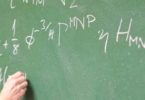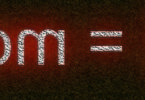Objective type VIT Chemistry Sample Paper contains question based on VITEEE Entrance exam.
Related: questions about fungi
Ques. Empirical formula of a hydrocarbon containing 80% carbon and 20% hydrogen is
(a) CH
(b) CH2
(c) CH3
(d) CH4
Ques. Aniline reacts with which of these to form Schiff base
(a) Acetic acid
(b) Benzaldehyde
(c) Acetone
(d) NH3
Ques. The element similar to carbon is
(a) Mg
(b) Mn
(c) Sn
(d) Po
Ques. An aqueous solution of 6.3 g of oxalic acid dihydrate is made up of to 250 ml. The volume of 0.1 N NaOH required to completely neutralise 10 ml of this solution is
(a) 40 ml
(b) 20 ml
(c) 10 ml
(d) 4 ml
Ques. Monomer of neoprene is
(a) Isoprene
(b) Chloroprene
(c) Vinyl chloride
(d) Vinyl acetylene
Ques. The correct set of quantum numbers for the unpaired electron of chlorine atom is
n l m
(a) 2 1 0
(b) 2 1 1
(c) 3 1 1
(d) 3 0 0
Related: questions on nuclear chemistry
Values of the four quantum numbers for the last electron in the atom are n = 4, l = 1, m = +1 and s = –1/2. Atomic number of the atom will be
(a) 22
(b) 32
(c) 33
(d) 36
Electricity do not pass through ionic compounds
(a) In solution
(b) In solid state
(c) In melted state
The dipole moment of chlorobenzene is 1.73 D. The dipole moment of -dichlorobenzene is expected to be
(a) 3.46 D
(b) 0.00 D
(c) 1.73 D
(d) 1.00 D
Ques. What weight of hydrated oxalic acid should be added for complete neutralisation of 100 ml of 0.2 N – NaOH solution ?
(a) 0.45 g
(b) 0.90 g
(c) 1.08 g
(d) 1.26 g
Ques. Which of the following would have the highest osmotic pressure (assume that all salts are 90% dissociated)
(a) Decimolar aluminium sulphate
(b) Decimolar barium chloride
(c) Decimolar sodium sulphate
(d) A solution obtained by mixing equal of (b) and (c) and filtering
Ques. What is kinetic energy of 1g of O2 at 47oC
(a) 1.24 x 102 J
(b) 2.24 x 102 J
(c) 1.24 x 103 J
(d) 3.24 x 102 J
Related: female reproductive system quiz
Ques. Crystals of covalent compounds always have
(a) Atoms as their structural units
(b) Molecules as structural units
(c) Ions held together by electrostatic forces
(d) High melting points
Ques. If a electron is present in place of anion in a crystal lattice, then it is called
(a) Frenkel defect
(b) Schottky defect
(c) Interstitial defects
(d) centre
Ques. If the pressure and absolute temperature of 2 litres of CO2 are doubled, the volume of CO2 would become
(a) 2 litres
(b) 4 litres
(c) 5 litres
(d) 7 litres
Ques. Which one of the following statements is false
(a) Avogadro number = 6.02 x 1021
(b) The relationship between average velocity (v) and root mean square velocity (u) is v = 0.9213 u
(c) The mean kinetic energy of an ideal gas is independent of the pressure of the gas
(d) The root mean square velocity of the gas can be calculated by the formula (3 RT / M)1/2
Ques. Benzene is obtained by
(a) Substitution of three acetylene molecules
(b) Addition of three C2H2molecules
(c) Polymerisation of three C2H2 molecules
(d) Condensation of three C2H2 molecules
Ques. Acelylene on polymerization gives
(a) Vinyl acetylene
(b) Cyclooctatetraene
(c) Benzene
(d) All of these
Related: redox reaction quiz
Ques. Emission is caused by the transformation of one neutron into a proton. This results in the formation of a new element having
(a) Same nuclear charge
(b) Very lower nuclear charge
(c) Nuclear charge higher by one unit
(d) Nuclear charge lower by one unit
Ques. HI was heated in a closed tube at 440oC till equilibrium is obtained. At this temperature 22% of HI was dissociated. The equilibrium constant for this dissociation will be
(a) 0.282
(b) 0.0796
(c) 0.0199
(d) 1.99
Ques. 120 gm of urea are present in 5 litre solution, the active mass of urea is
(a) 0.2
(b) 0.06
(c) 0.4
(d) 0.08
Ques. If the hydrogen ion concentration of a given solution is the of the solution will be
(a) 2.26
(b) 3.40
(c) 3.75
(d) 2.76
Ques. When zinc is added to CuSO4 copper gets ppt. due to
(a) Reduction of copper ions
(b) Oxidation of copper ions
(c) Hydrolysis of copper sulphate
(d) Complex formation
Ques. The solubility product of CuS, Ag2S, HgS are 10–31, 10–44, 10–54 respectively. The solubilities of these sulphides are in the order
(a) Ag2S > CuS > HgS
(b) Ag2S > HgS > CuS
(c) HgS > Ag2S > CuS
(d) CuS > Ag2S > HgS
Related: endocrine glands and hormones quiz
Ques. Which of the following types of reactions is not exhibited by diethyl ether
(a) Salt formation
(b) Neucleophilic substitution
(c) Free radical substitution
(d) Electrophilic substitution
Ques. Two moles of an ideal gas expand spontaneously into a vacuum. The work done is
(a) 2 Joule
(b) 4 Joule
(c) Zero
(d) Infinite
Ques. Liquid ammonia is used in refrigeration because of its
(a) High dipole moment
(b) High heat of vaporization
(c) High basicity
(d) All of these
Ques. The temperature coefficient of most of the reactions lies between
(a) 1 and 3
(b) 2 and 3
(c) 1 and 4
(d) 2 and 4
Ques. The ONO angle is maximum in
(a) NO3–
(b) NO2–
(c) NO2
(d) NO2+
Ques. The minimum energy required for molecules to enter into the reaction is called
(a) Potential energy
(b) Kinetic energy
(c) Nuclear energy
(d) Activation energy
Related: organic chemistry multiple choice questions with answers
Ques. The current in a given wire is 1.8 A. The number of coulombs that flow in 1.36 minutes will be
(a) 100 C
(b) 147 C
(c) 247 C
(d) 347 C
The specific conductivity of N/10 KCl solution at 20oC is 0.0212 ohm–1 cm–1 and the resistance of cell containing this solution at 20oC is 55 ohm. The cell constant is
(a) 1.166 cm–1
(b) 2.173 cm–1
(c) 3.324 cm–1
(d) 4.616 cm–1
HBr and HI can reduce H2SO4, HCl can reduce KMnO4 and HF can reduce
(a) H2SO4
(b) KMnO4
(c) K2Cr2O7
(d) None of the above
The charge on cobalt in [Co(CN)6]3- is
(a) – 6
(b) – 3
(c) + 3
(d) + 6
In which of the following commercial processes a catalyst is not used
(a) Haber’s process
(b) Deacon’s process
(c) Solvay process
(d) Lead chamber process
Ques. Which one of the following is used for reviving the exhausted permutite
(a) HCl solution
(b) 10% CaCl2 solution
(c) 10% MgCl2 solution
(d) 10% NaCl solution
Related: Glycolysis quiz
Ques. If the difference in electronegativities of two elements is very large, then
(a) The bond is 50% ionic
(b) The bond is 100% covalent
(c) The bond is more covalent than ionic
(d) The bond is more ionic than covalent
Ques. The most common lanthanide is
(a) Lanthanum
(b) Cerium
(c) Samarium
(d) Plutonium
Ques. Which metal is found in free state
(a) Iron
(b) Gold
(c) Aluminium
(d) Sodium
Ques. Thomas slag is
(a) CaSiO3
(b) Ca3(PO4)2
(c) MnSiO3
(d) CaCO3
Ques. Replacement of Cl of chlorobenzene to give phenol requires drastic conditions but chlorine of 2, 4-dinitrochlorobenzene is readily replaced because
(a)NO2 make ring electron rich at ortho and para
(b) NO2 withdraws e– from meta position
(c) denotes e– at meta position
(d) NO2 withdraws e– from ortho/para positions
Ques. Temperature of maximum density in H2O and D2O respectively are
(a) 277.15 K, 284.75 K
(b) 273.15 K, 277.15 K
(c) 277.15 K, 285.75 K
(d) 284.75 K, 277.15 K
Related: kinematics test questions
Ques. Hydrogen can be prepared by the action of dil. H2SO4 on
(a) Copper
(b) Iron
(c) Lead
(d) Mercury
Ques. The statement true for N3– is
(a) It has a non-linear structure
(b) It is called pseudohalogen
(c) The formal oxidation state of nitrogen in this anion is -1
(d) It is isoelectronic with NO2
Ques. The lightest metal is
(a) Li
(b) Mg
(c) Ca
(d) Na
Ques. Which of the following has highest paramagnetic character
(a) (II)
(b) (II)
(c) (II)
(d) (II)
Ques. The vapour density of completely dissociated NH4Cl would be
(a) Slight less than half that of NH4Cl
(b) Half that of NH4Cl
(c) Double that of NH4Cl
(d) Determined by the amount of solid NH4Cl in the experiment
Ques. Oxidation number of Mn in K2MnO4, and in K2MnO4 are respectively
(a) + 6 and + 7
(b) + 6 and + 6
(c) + 7 and + 7
(d) + 7 and + 6
related: krebs cycle quiz
Ques. An, example for a double salt is
(a) Potassium ferricyanide
(b) Cobalt hexamine chloride
(c) Cuprous sulphate
(d) Mohr’s salt
Ques. The coordination and oxidation number of X in the compound [X(SO4)(NH3)5]Cl will be
(a) 6 and 4
(b) 10 and 3
(c) 2 and 6
(d) 6 and 3
Ques. What volume of a solution of hydrochloric acid containing 73 g of acid per litre would sufficient for the exact neutralization of sodium hydroxide obtained by allowing 0.46 g metallic sodium to act upon water (Cl = 35.5, Na = 23.0, 0 = 16)
(a) 10 ml
(b) 15 ml
(c) 20 ml
(d) 8 ml
Ques. Nessler’s reagent is
(a) KHgI4
(b) K2HgI4 + NH4OH
(c) K2HgI4 + KOH
(d) KHgI4 + NH4OH
Ques. If the Kb value in the hydrolysis reaction B+ + H2O ⇄ BOH + H+ is 1.0 x 10–6, then the hydrolysis constant of the salt would be
(a) 1.0 x 10–6
(b) 1.0 x 10–7
(c) 1.0 x 10–8
(d) 1.0 x 10–9
Ques. Accurate determination of atomic masses is done with the instrument called as
(a) Spectrophotometer
(b) Mass spectrometer
(c) Atomic absorption spectrometer
(d) Calorimeter
Related: Binomial expansion questions
Ques. An organic compound with C = 40% and H = 6.7% will have the empirical formula
(a) CH2
(b) CH2O
(c) C3H6O3
(d) C2H4O2
Ques. Which of the following undergoes nucleophilic substitution by SN1 mechanism
(a) Benzyl chloride
(b) Ethyl chloride
(c) Chlorobenzene
(d) Isopropyl chloride
Due to the presence of an unpaired electron, free radicals are
(a) Chemically reactive
(b) Chemically inactive
(c) Anions
(d) Cations
Cetane is a compound which has very good ignition property. Chemically it is
(a) CH3(CH2)14CH3
(b) (CH3)3 C(CH2)11 CH3
(c) C17H34
The most volatile compound is
(a) 2, 2-dimethyl propane
(b) 2-methyl butane
(c) Isobutane
(d) n-pentane
An alkyl halide may be converted into an alcohol by
(a) Addition
(b) Substitution
(c) Dehydrohalogenation
(d) Elimination
Related: trivia question on food web
Emulsifier is a reagent which
(a) Makes emulsion homogeneous
(b) Stabilises the emulsion
(c) Increases the rate of distribution
(d) Coagulates the emulsion
The order of reactivities of the following alkyl halides for a SN–2 reaction is
(a) RF > RCl > RBr > RI
(b) RF > RBr > RCl > RI
(c) RCl > RBr > RF > RI
(d) RI > RBr > RCl > RF
Which of the following is not the constituent of Fehling’s solution?
(a) Copper sulphate
(b) Rochelle’s salt
(c) Ferrous sulphate
(d) Caustic soda
Remaining part of atom except outer orbit is called
(a) Kernel
(b) Core
(c) Both (a) and (b)
(d) Empty space
PCl5 is 50% dissociated into PCl3 and Cl2 at 1 atm. It will be 40% dissociated at
(a) 1.75 atm
(b) 1.84 atm
(c) 2.009 atm
(d) 1.25 atm
The pH of 0.1 M solution of the following salts increases in the order
(a) NaCl < NH4Cl < NaCN < HCl
(b) HCl < NH4Cl < NaCl < NaCN
(c) NaCN < NH4Cl < NaCl < HCl
(d) HCl < NaCl < NaCN < NH4Cl
Related: questions and answers kingdom plantae
The ratio between the root square velocity of H2 at 50K and that of O2 at 800K, is
(a) 4
(b) 2
(c) 1
(d) ¼
Half-life of a radioactive sample is 1500 years. Its 1 gram sample is kept in a fused tube, then how much amount will be left behind after 3000 years
(a) 1 g
(b) 0.5 g
(c) 0.25 g
(d) Nothing will be left
What is the correct order of pKa values of following compounds
[I] H2O
[II] MeOH
[III] EtOH
(a) I > II > III
(b) III > II > I
(c) I > III > II
(d) II > III > I
Ques. Dehydrohalogenation of an alkyl halide is a/an
(a) Nucleophilic substitution reaction
(b) Elimination reaction
(c) Both nucleophilic substitution and elimination reaction
(d) Rearrangement
Ques. In adsorption of oxalic acid on activated charcoal, activated charcoal act as
(a) An adsorbent
(b) An adsorbed
(c) An absorbent
(d) An absorbed






